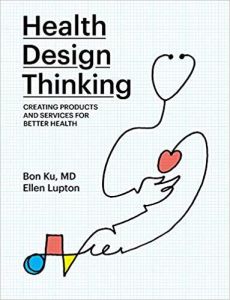Join getAbstract to access the summary!

Join getAbstract to access the summary!
Ellen Lupton and Bon Ku
Health Design Thinking
Creating Products and Services for Better Health
MIT Press, 2020
What's inside?
Health care can only improve with the help of health design thinking.
Recommendation
Have you ever entered a space and felt at peace, or worked through a process and felt appreciation for how easily the task flowed, or used a product so intuitive in its design that you didn’t need instructions? Imagine those experiences in a health care context. That’s the world design experts Bon Ku and Ellen Lupton would like to create. On its surface, their manual aims at designers of health products, but the exercises the authors provide will help anyone involved in creative work or problem-solving.
Summary
About the Authors
Dr. Bon Ku is the Director of the Health Design Lab, the Assistant Dean for Health and Design at Thomas Jefferson University and leads the Medicine+Design initiatives at the Sidney Kimmel Medical College. Ellen Lupton is founding director of Maryland Institute College of Art’s Graphic Design MFA program.

















Comment on this summary